Advantages and disadvantages of CR knee joint prosthesis
 Jul. 20, 2020
Jul. 20, 2020
Advantages and disadvantages of CR knee joint prosthesis
Last week, we introduced the advantages and disadvantages of PS knee joint prosthesis. This week, we will talk about CR knee joint prosthesis.
First of all, CR knee joint prosthesis is also known as "posterior cruciate ligament (PCL) retention prosthesis", which means that the posterior cruciate ligament (PCL) is preserved during surgery, and only the anterior cruciate ligament is removed.
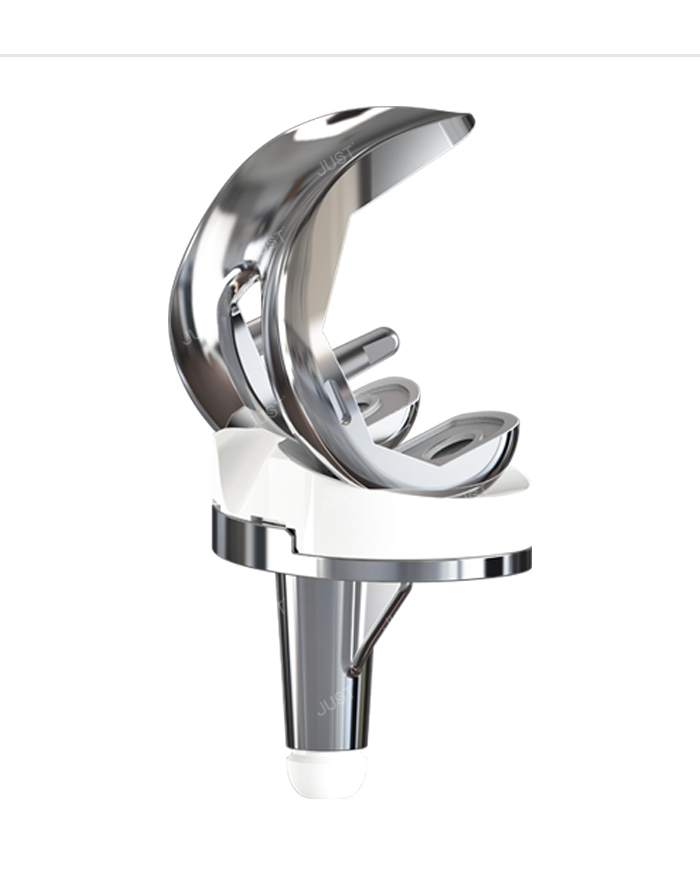
In the design of PS and CR prosthesis, the biggest difference is that "posterior cruciate ligament (PCL)" is preserved or resection. What are the functions of the posterior cruciate ligament (PCL)?
Limiting tibial movement relative to femur
Maintain flexion space of knee joint
It can stabilize the internal and external displacement, inside and outside angle and axial rotation
When the posterior cruciate ligament is removed, the asymmetric stress acts on the polyethylene pad, making it easy to wear
In most cases, the balance of ligament can be achieved without PCL resection (except for varus or valgus saddle > 20 °)
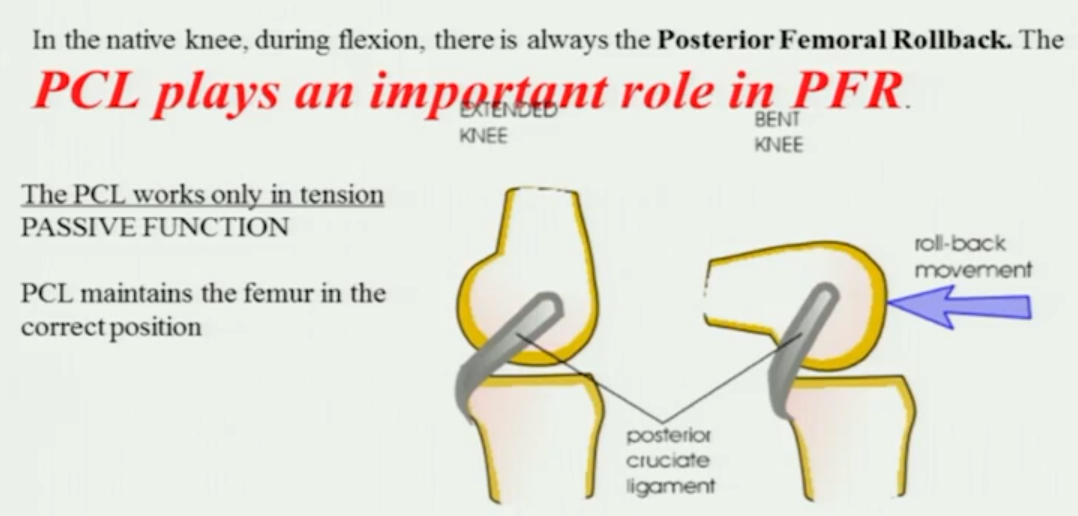
What are the advantages of CR prosthesis?
Less limitation / less stress on the tibial bearing/ Low stress on prosthesis bone interfacel
Better roll back, good potential range of motion
Return to normal articular line
Bone mass is preserved, which is favorable for revision
The limitation of patella is small, patella replacement is not necessary
Preserving proprioceptor
The indications of CR prosthesis are as follows:
Young patients with high functional requirements and good muscle strength
Patients with no flexion deformity, wide range of motion and good ligament function.
Patients with valgus within 10 ° and varus within 15 ° were included.
The disadvantages of CR prosthesis are as follows:
Higher requirements for surgical techniques
Ligament balance is relatively more difficult, and the tightness is relatively difficult to grasp
The risk of posterior cruciate ligament (PCL) injury is also increased with the relatively large caster angle
High requirement for posterior condylar osteotomy (off set)
Risk of abnormal anteversion of femoral condyle
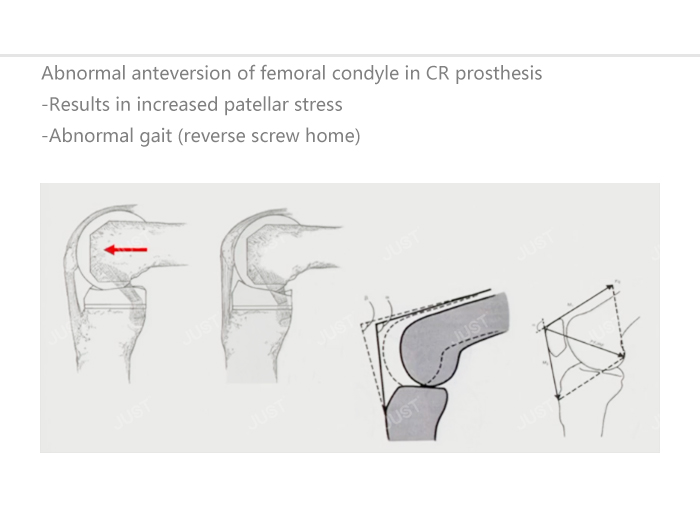
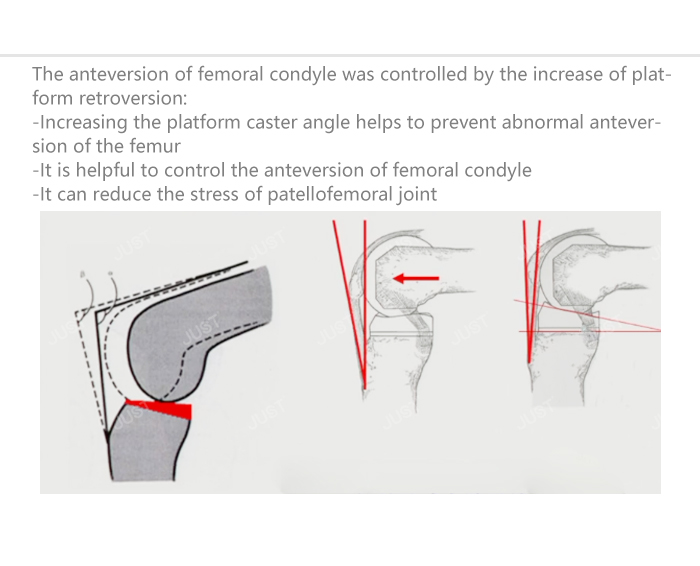
The key point of CR prosthesis: balance of PCL
Technical points:
Pull-out Lift-off Test: Pull-out
1) Install the prosthesis and bend the knee 90 degrees
2) If the tibial specimen can be pulled out from under the femoral prosthesis in the knee flexion position, the tension and flexion stability of PCL are not sufficient.
3) If the tibial specimen with curved liner can slide into the position easily, it indicates that the gap and PCL are too loose, so the thickness of tibial liner should be increased.
Pull-out Lift-off Test: Lift-off
Turn the patella back to the normal position, bend the knee 90-100 ° and check the interface between the tibial specimen and the osteotomy. If the prosthesis is tilted and the PCL is too tight, it needs to be released. PCL was usually released on the femoral side, and the anterolateral was released first.
The false positive of lift off occurred when the posterior condylar osteophyte was not removed.
In the knee prosthesis with movable pad design, knee flexion 90 should pay attention to the front and back position of the pad in the tibial bracket. If the PCL is too tight, the pad will slide backward, if it is too loose, it will slide forward
 .
.
Summary:
The characteristics of CR and PS prosthesis are as follows :
:
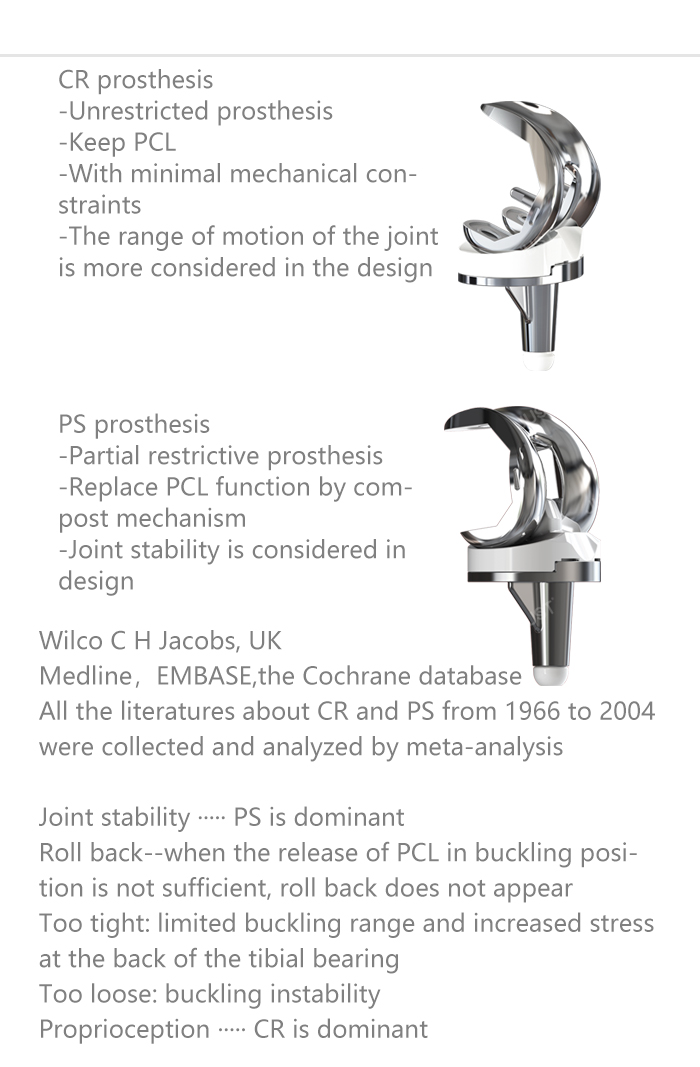
Because of the different design concepts and surgical techniques of PS and CR prosthesis, we can't use the same surgical method to make different prosthesis. It is suggested that beginners should be familiar with PS prosthesis, accumulate enough experience, and then try CR prosthesis to find their own learning curve.













